Ancient Roots.
The tradition of wedding flowers evolved from the bride carrying flowers and spices to ward off the evil spirits that would try to spoil the happiness of a new marriage.
In Celtic times, English lavender was preferred in bouquets for its sweet smell and to betoken the couple’s love and devotion to one another. Many Gaelic brides wore a wreath of wildflowers, including a sprig of ivy. Today, the humble ivy is often seen in bridal arrangements as a sign of fidelity.

As a modern bride, you can follow an older tradition or create your own to reflect your personal style.
Modern Beginnings.
As a modern bride, you can follow an older tradition or create your own. Your wedding flowers should match the theme of your nuptials, which should also reflect your personal style.
Is your wedding simple and chic? Then a few well-placed elegant orchid blooms or calla lilies can do the trick. If your ceremony will be an over-the-top extravaganza, feel free to use flowers abundantly, choosing ones that are in season for the greatest economy.
Using wildflowers can be perfect for a natural-themed or Celtic ceremony, and if you have a strong color theme in your wedding, you can use that as a cue for arrangements that complement your choice of hues.
Big Impact from Little Flowers.
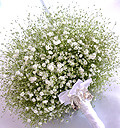 Sometimes the simplest things pack the biggest punch. Using just one type of flower can result in a stunning display, and even save you money since you can purchase them in bulk. Imagine a reception hall filled with masses of ethereal, romantic baby’s breath!
Sometimes the simplest things pack the biggest punch. Using just one type of flower can result in a stunning display, and even save you money since you can purchase them in bulk. Imagine a reception hall filled with masses of ethereal, romantic baby’s breath!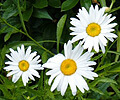 Daisies are also an inexpensive, beautiful choice that you can use en masse for maximum effect. Think about grouping daisies in simple silver vases of varying sizes at the head table.
Daisies are also an inexpensive, beautiful choice that you can use en masse for maximum effect. Think about grouping daisies in simple silver vases of varying sizes at the head table.
Silver julep cups heaped with these simple gems would make perfect centerpieces for guest tables and arranging daisies around a floral foam ball and suspending it from a silk ribbon above the cake table would make an eye-catching accent.
Any simple filler-type flower can work in this scenario: consider alstroemeria, Queen Anne’s lace, goldenrod, heath and limonium. For a more formal wedding, roses, peonies and lilies would be a lovely, although more expensive, alternative.
Say it With Flowers.
Perhaps you are not as interested in the color or type of flowers as your are in their meaning. Flowers have had their own “language” since ancient times.Here is a list of flowers commonly used in wedding bouquets and their meanings:
 |
Baby’s breathInnocence |
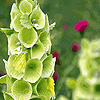 |
Bells of IrelandLuck |
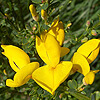 |
BroomHumility |
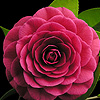 |
CamelliaExcellence |
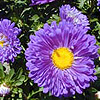 |
China asterFidelity |
 |
Chrysanthemum"I love" |
 |
DaisyInnocence, Beauty |
 |
Forget-me-notTrue love |
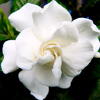 |
GardeniaSecret love |
 |
IvyFidelity, dependence |
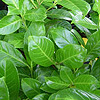 |
LaurelSuccess |
 |
LavenderDevotion |
 |
LilyPassion, purity |
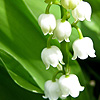 |
Lily of the ValleySweetness |
 |
OrchidRefined beauty |
 |
PeonyHonor |
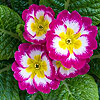 |
PrimroseEternal love |
 |
RosePassion, joy |
 |
SunflowerPure thoughts |
 |
ThymeThriftiness |
Most medieval and Renaissance brides who carried flowers did so with an eye toward the “message” they sent the onlookers. These flowers most often symbolized purity, integrity, innocence and love.
Finding A Florist.
Whether you want to match your wedding colors, emphasize a theme, or send a floral message, choosing a florist that has experience with weddings can be a real stress-tamer.
Besides assisting you with the arrangements, colors, and types of flowers to fit your wedding concept, a knowledgeable florist can also help you keep an eye toward budget by creating arrangements that serve two purposes.
For instance, an altarpiece can travel to the reception as a focal point for the head table and bridesmaids bouquets dropped into vases will make an elegant counterpoint to the attendant’s table.
If you use flowers to line the aisle in the church, you can transport them to the reception to line the entryway as well. If you will be moving flowers from one place to another, it is a good idea to appoint someone your Flower Organizer, who will take care of all the transfer details so you don’t have to worry about logistics on the big day.

Finding the right florist will take much of the stress out of the overall arrangments
Doing it Yourself.
Don’t be afraid of making your own bouquet. Traditional, single-flower bouquets take only about a half and hour to construct with about 35-55 stems of flowers. Make sure you stick with hardier flowers like daisies, roses and lilies that can take a lot of handling and will not wilt easily.
Lovely tulle bows are easy and inexpensive to make and will add a nice touch to a simple bouquet.
Constructing bride’s and bridesmaids’ bouquets as well as boutonnieres for the groom and groomsmen can be a great way for some of your good friends to get together and socialize in the days leading up to the ceremony. Again, appoint a Flower Organizer that can oversee this task so you can tend to other details.
Faking it.
Today’s bridal silk flowers are beautiful and lifelike, not like the garishly obvious silks of yesteryear. Finding a professional silk flower arranger is the first step in creating lovely, keepsake bouquets and arrangements that you can enjoy for years to come. Silk arrangements also make wonderful take-home gifts for honored guests or attendants.
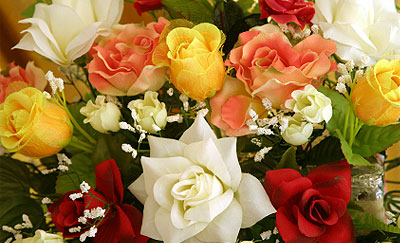
Today's silk flowers are so beautiful and lifelike that more couples are turning to articifial
Whatever floral designs you choose for your special day will be sure to make a lovely, lasting impression. So don’t stress or second-guess your decision, by their very nature, it is impossible for flowers to be anything but beautiful, just like the bride herself!
Did You Know?
Irish brides wore a wreath of wildflowers in their hair in lieu of a veil and carried bouquets of herbs and wildflowers to match.
Celtic brides tucked a sprig of shamrock into an Irish bouquet or a branch of white heather for the Scottish as each was thought to bring good luck to the bearer.
In 19th century Ireland, people decorated the way from the bride's home to the church on the day of her wedding with floral garlands and evergreen boughs.

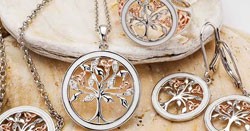
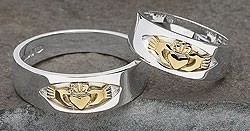
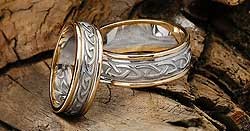
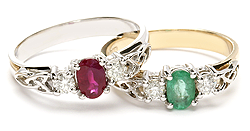
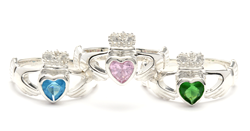
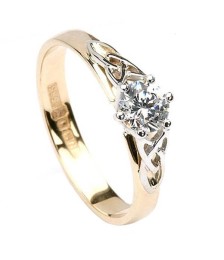 Trinity Engagement Ring
Trinity Engagement Ring  Sapphire Diamond Ring
Sapphire Diamond Ring 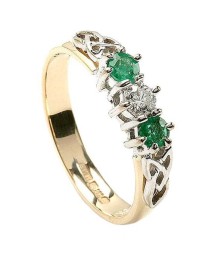 Emerald 3 Stone Ring
Emerald 3 Stone Ring 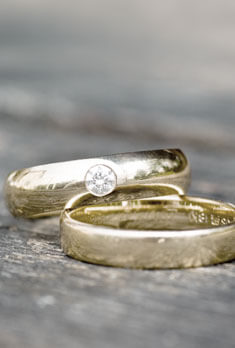

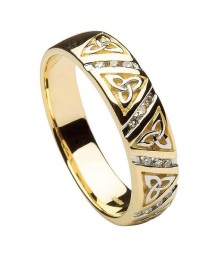 Diamond Trinity Ring
Diamond Trinity Ring 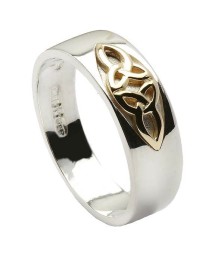 Trinity Inset Ring
Trinity Inset Ring  Celtic Knot Wedding Ring
Celtic Knot Wedding Ring 